Part 1: Wetlands Hearing on Future of Former UConn West Hartford Campus Gets Underway

Audio By Carbonatix

The development team presents a wetlands application for 1700 and 1800 Asylum Avenue to West Hartford's TPZ on Nov. 29, 2023. Photo credit: Ronni Newton
West Hartford’s Town Plan & Zoning Commission, in its capacity as the Inland Wetlands and Watercourses Agency, began the process of considering the wetlands application for proposed development of 1700 and 1800 Asylum Avenue, the site of the former UConn campus.
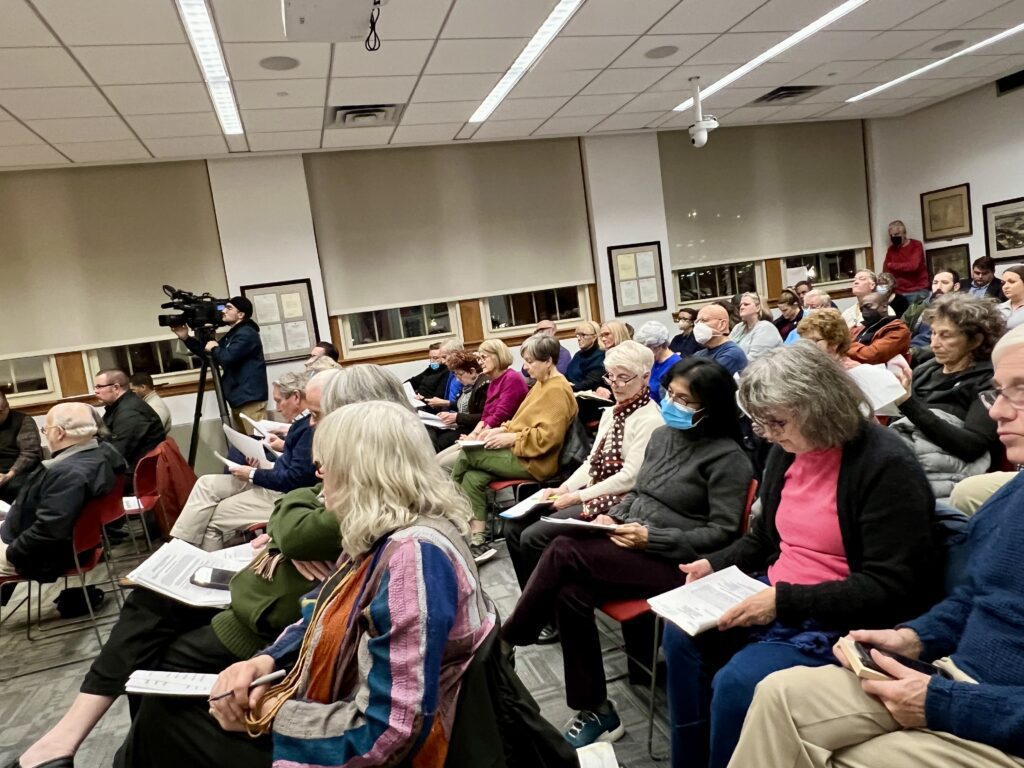
Members of the public packed Town Council chambers at West Hartford Town Hall for the TPZ hearing regarding the wetlands application for 1700 and 1800 Asylum Avenue on Nov. 29, 2023. Photo credit: Ronni Newton
By Ronni Newton
The process of considering the wetlands application submitted by the development group West Hartford 1 LLC, through the entities WEHA Development Group LLC and WEHA Development Group East LLC, began with a long-anticipated public hearing before the Town Plan & Zoning Commission (TPZ) Wednesday night at Town Hall.
Wednesday’s hearing lasted nearly four hours, but the review of the wetlands application is nowhere near complete. The hearing – which had been delayed four times from since its originally scheduled date of Sept. 6, 2023 – will resume on Dec. 11, at 6 p.m., and continuation to a third date later that week is possible. TPZ must close the hearing by Dec. 15 due to Connecticut statutory requirements, Town Planner Todd Dumais confirmed to We-Ha.com, or the entire process will need to start over again.
“We will not get it all done tonight. This will be a multi-day hearing experience,” TPZ Chair Kevin Ahern announced at the opening of the hearing Wednesday night, noting that it is a very large application.
TPZ, in addition to considering zoning applications, is also the town’s Inland Wetlands and Watercourses Agency (IWWA) and is currently acting in that capacity with its review of the application.
The complexity of the wetlands review for the entire property– which involves roughly 57.4 acres, of which 42.9 are regulated as either wetlands or within the 150-foot upland review area where there could be direct wetlands and watercourses impact – and the myriad questions and comments by town staff and a professional soil scientist working with the town, has led to the hearing being delayed to ensure that all issues have been given proper attention.
Another element was added to the process Wednesday night – the submission of a verified intervener petition by West Hartford residents Christine Feely, Jessica Rubin, and Gary Schulman, who were seeking the authority to become intervenors in the process, a status which permits them to give their own presentation and also cross-examine the applicant’s witnesses.
Ahern has served on TPZ for nine years, and a request by anyone to become an intervening party is not a common occurrence. Dumais said the only time a petition to intervene has been submitted in recent memory was in connection with the application for a residential development on East Maxwell Drive on land that at the time was part of the American School for the Deaf campus.
The petition to intervene submitted by Feely, Rubin, and Schulman states that they “are concerned with environmental integrity of natural resources including the ground water, surface water, trees, wildlife habitat and. land, and the peaceful enjoyment and quality of life in West Hartford.”
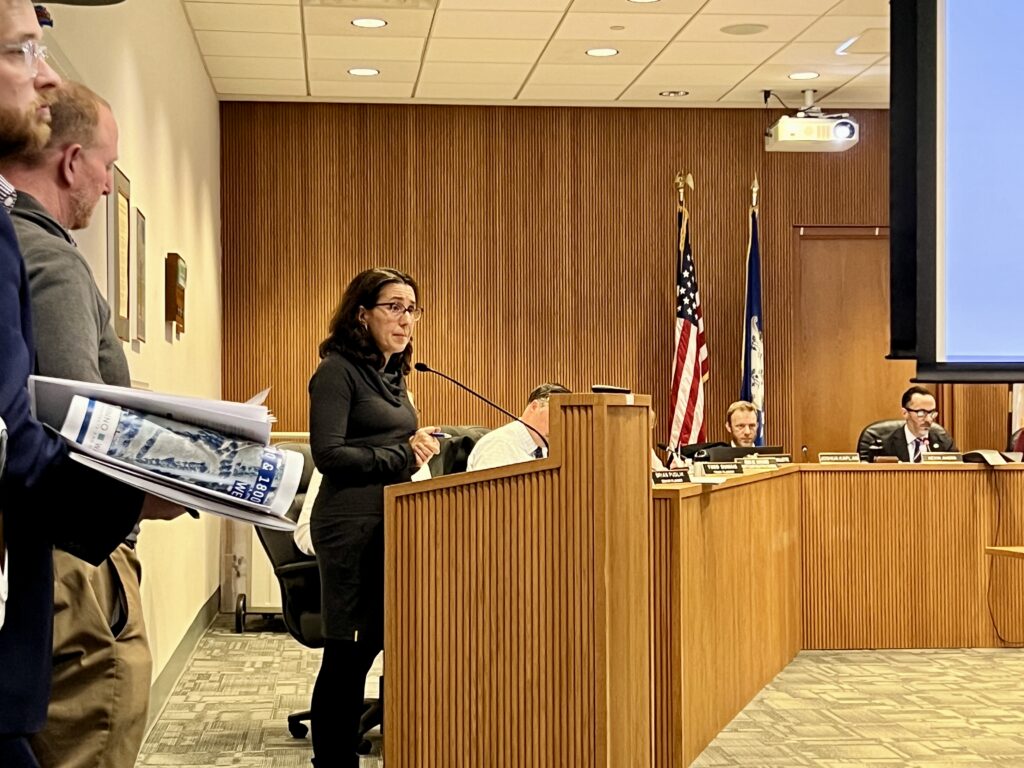
Jessica Rubin, in her capacity as an intervenor, questions members of the development team at the TPZ/IWWA hearing on Nov. 29, 2023. Photo credit: Ronni Newton
A brief executive session was held Wednesday night in order for commission members to receive legal advice about the process. The verified petition, which was dated Nov. 26, 2023, was accepted, Ahern said.
While there has been a lot of passion among members of the community who are opposed for various reasons to the development that is being called Oakwood Park, including a petition and signage in opposition, there were no pitchforks being waved at Wednesday’s hearing, which was well-controlled by Ahern who announced the format at the start. “The scope of our review is limited to our inlands wetlands regulations,” he said, noting that it is highly technical and the commission’s role in the consideration of the application is to “preserve the natural resource of our town.” Issues like traffic were not going to be part of the discussion, and he successfully kept the meeting to topics relevant to wetlands.
On Wednesday they were only able to get through review of the application for 1700 Asylum Avenue – the east side of the property which is currently a paved 1,000-plus-space parking lot and ballfields/playground area – with a presentation by the developer, cross-examination by the intervenor, and questions by TPZ members.
“Tonight’s hearing is an important step for our project and a chance to show the Town Planning and Zoning/Inland Wetland and Watercourses Agency the ways our plans have evolved and improved to minimize impact on the wetlands,” Domenic Carpionato, principal of West Hartford 1 LLC, said in a statement shared with We-Ha.com following the conclusion of Wednesday’s hearing.
“We are heartened by the amazing level of support expressed by many West Hartford residents and business owners who wrote in favor of the project and those who came hoping to speak tonight. We look forward to the continuation of the hearing and proceeding through the permitting process,” Carpionato added.
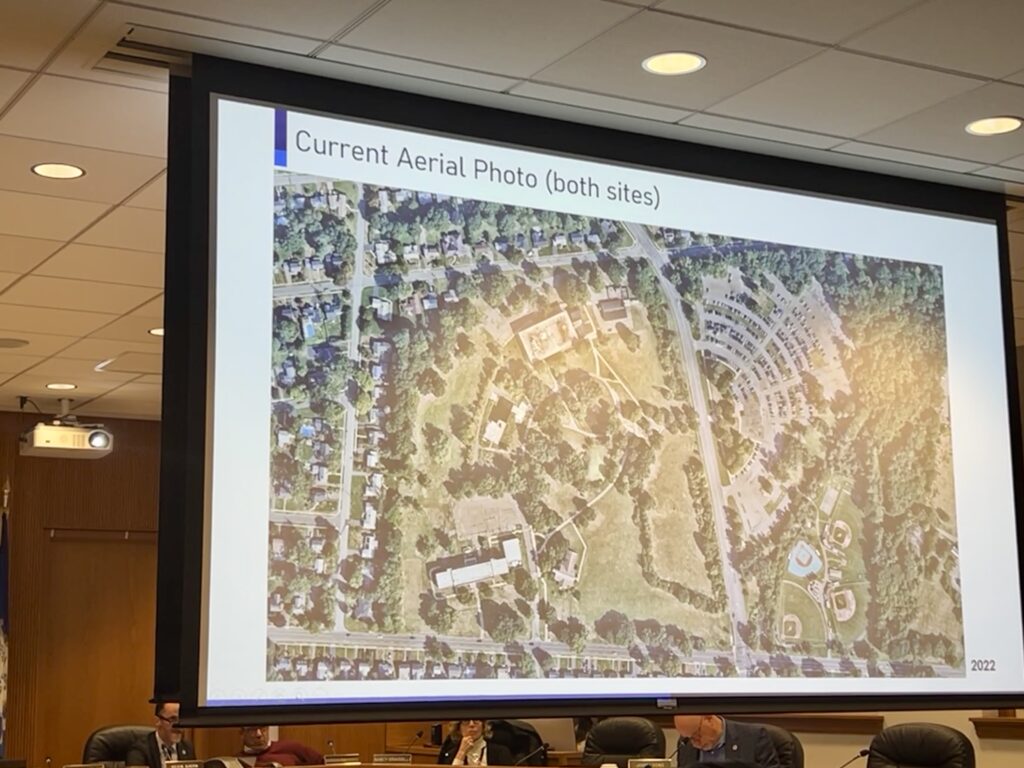
Aerial view of 1700 and 1800 Asylum Avenue. Photo credit: Ronni Newton
Attorney Robin Pearson of Alter & Pearson LLC, part of the development team, led the presentation, stating that the purpose of the review is to determine if the wetlands and watercourses will be appropriately protected during the construction and after the project is complete. The 150-foot uplands review area is also part of the regulated portion of the site, but any discussion must remain about whether or not a matter is “demonstrably and notably shown to impact the wetlands themselves,” she said.
“If evidence is that the wetlands impact will do no harm,” Pearson said, the commission will approve the developer’s permit. It is also possible for TPZ/IWWA to issue a permit with conditions.
A zoning application, which has broader scope, would be the next step, Pearson said.
The development, she said, will be beneficial for the community. “We are in many ways rescuing the wetlands that are on this site,” she said, with minimal disturbances of the wetlands themselves – which she said are already “disturbed” and are located in the middle of a densely developed area – and the rectifying of polluted areas. More than $5 million will be invested by the developer at 1800 Asylum alone in remediation efforts, Pearson said.
Matthew Bruton, an engineer and regional manager with BL Companies in Hartford, which is part of the development team, provided some historical perspective about the site, from even before it became the UConn campus. As it was developed, what he called a “very rudimentary” system of catch basins and pipes were installed to deal with stormwater.
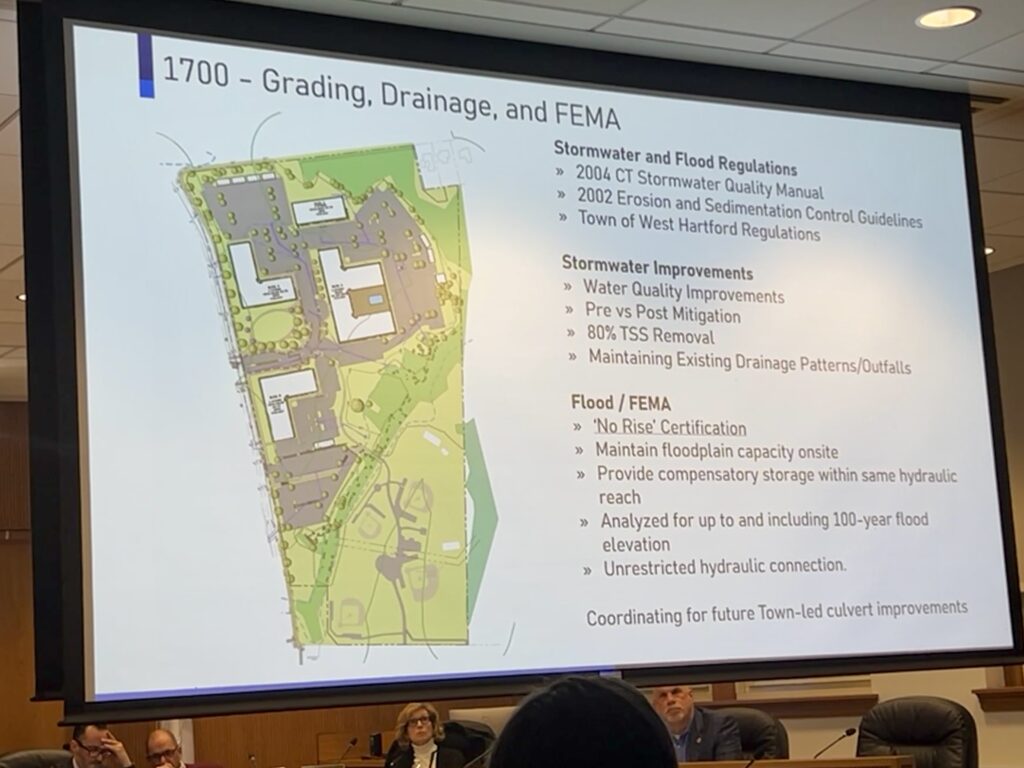
Information about grading, drainage, and FEMA at 1700 Asylum Avenue. Photo credit: Ronni Newton
What the developer plans to do is install drains that will capture and convey water to feed the wetlands, St. Joseph’s Brook, and Trout Brook, but provide nutrient removal to first clean that water to state environmental standards. It’s a “vast improvement over the system that’s in the property today,” Bruton said, adding that the analysis has looked at various rainfall rates up to 100-year events.
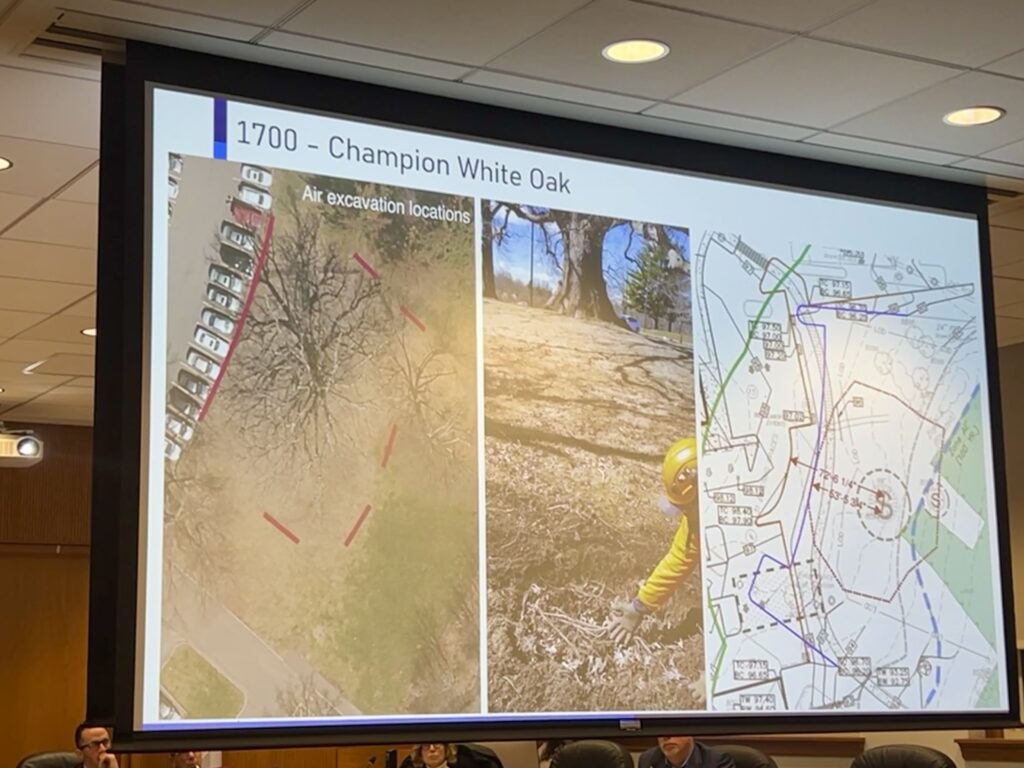
Details about the root system and planned pathway near the Champion White Oak. Photo credit: Ronni Newton
Dominick Celtruda, landscape architect with BL Companies, said attention will be paid to ensure that the Champion White Oak on the 1700 Asylum Avenue side of the development will be protected. A survey of the parcel indicated a total of 863 trees, he said, with 33 dead and 69 in poor condition. Some will be removed, and more trees will be planted than are on the site now, but one of the questions for which commission members are still seeking clarification is regarding inconsistencies in labeling trees on the various maps presented as part of the application.
Dean Gustafson, a professional soil scientist with All-Points Technology, also part of the development team, detailed plans to remove invasive plants and enhance the riparian environment, which he said “will actually create an enhancement to the wetland resource.”
Rubin and Schulman both asked questions of the development team. Rubin was advised that the primary noise disturbance to wildlife would be during the construction phase, and Gustafson said there is no evidence of rare wildlife on the site.
Shulman asked about construction taking place in the uplands review area, and whether or not that can be decreased. Bruton said the development will remain nearly 100% within the boundaries of the pavement that exists today. “We’re respecting that very closely,” he said, with the exception of some new parking for the baseball field and some paved area around one of the four residential buildings planned for the site to provide full circulation for emergency response purposes.
The commissioners had highly technical questions regarding the digging of pits beneath existing pavement to check for the height of the water table. Celtruda said he and the professional soil scientist hired by the town agree that those are not regulated areas.
Commissioners also had specific questions about the outfalls, the number of hydrodynamic separators to be installed at 1700 Asylum (the answer was six of the water treatment devices), dewatering during construction (which will take place), and monitoring of planting including where invasive species will be removed (there is still some question of whether the monitoring will be for five or 10 years).
Commissioner Joshua Kaplan asked about plans for a path near the Champion White Oak tree, expressing concerns that the creation of the path will disturb the extensive root system of the tree. Bruton and Gustafson both indicated that they were amenable to moving the path farther from the tree, or turning it into an elevated boardwalk to remove the possibility of disturbing the root system.
Council chambers were jam-packed and there were additional attendees seated in an overflow area in the Town Hall auditorium, and although there were more than 20 members of the public who had signed up to speak, just four took the opportunity, which did not come until after 10:30 p.m., when commission members and the intervenors were done with presentation and questions about 1700 Asylum. Some had left due to the late hour, and others chose to defer their comments to Dec. 11, when the larger and even more complex wetlands application for 1800 Asylum Avenue will also be considered.
While it is not a strict requirement of testifying at TPZ, Ahern asked that those presenting keep their comments to 3 minutes – and most complied. The intervenors, because of their special status, are not permitted to otherwise provide public comment.
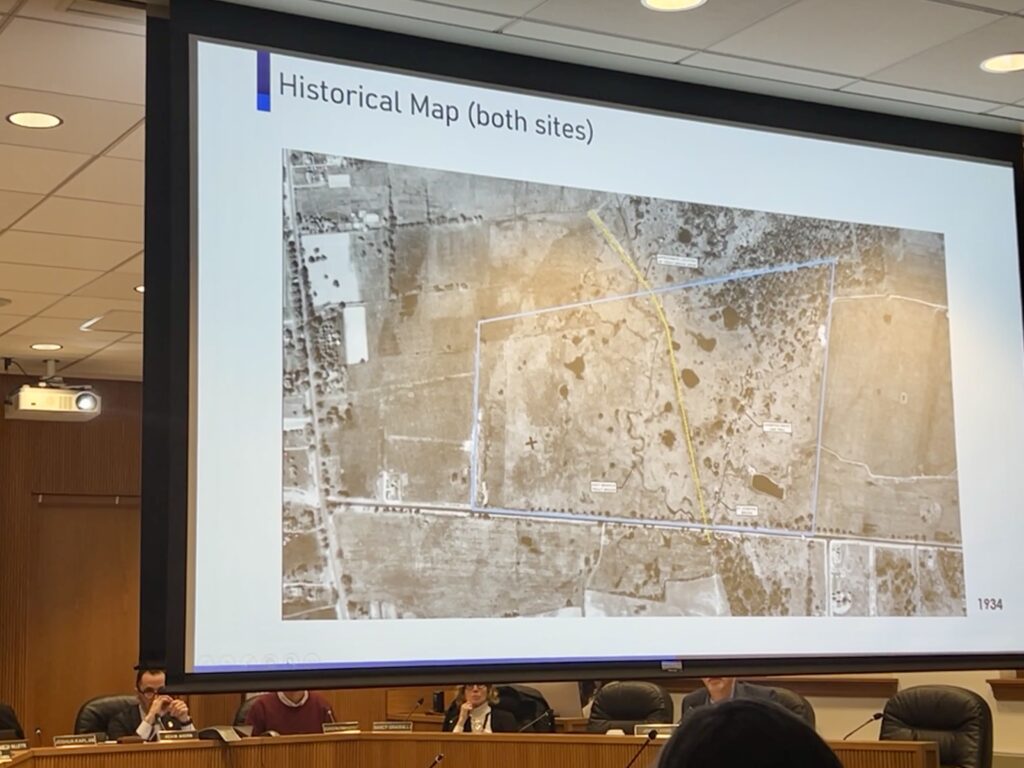
1934 map of 1700 and 1800 Asylum Avenue. Photo credit: Ronni Newton
Ruth Miller, who lives on Asylum Avenue near the property, has a background in landscape design. She handed out maps to the audience, and noted that there has been recurrent flooding impacting area residents, and “this past summer was a true red flag.”
According to data she collected, the watersheds in this area are unhealthy, she said. “This area has a poor ratio of pervious to impervious surfaces,” she added, stating that there are already high nitrogen levels and the soil can’t absorb much water. While planners in the 1930s didn’t know what we know today, Miller said, “West Hartford has a rare opportunity to restore,” and to replace concrete with permeable surfaces to create “sponge cities.” She said she hopes the developer will “seize a rare opportunity to correct mistakes.”
John O’Donnell, an attorney who formerly served on TPZ as well as the town’s Conservation and Environment Commission, said there is “no question that this has direct impact on the wetlands.” He suggested that there should be consideration of other “feasible and prudent alternatives to the project,” including returning it to its original use as a farm.
“You’ve heard zero evidence today about the social and economic benefits this project would pose to the town,” O’Donnell said, stating that alternatives have been discarded. The project hasn’t been “analyzed using it for its currently zoned purpose – single family,” he said, as many in the audience applauded.
University of Saint Joseph President Rhona Free also addressed TPZ/IWWA members, and noted that when USJ has applied for development projects on the campus that is just to the east of this parcel, they have had to go through the same process. “My experience makes me confident .. that this project will improve storm water management and wetlands impacts,” she said. “I feel confident … even more confident after hearing the presentation tonight.”
Harris Simons, principal of Figure Eight Properties which controls a significant amount of property in West Hartford, commented, “I like to see smart growth from the town. I just want to commend the process.”
He said town staff has spent many months working on this review, and the town is lucky to have attracted a developer like Carpionato. “Flooding is a really big issue .. but I have confidence in this town,” Simons said.
Dumais said Thursday that town staff is “still reviewing all of the voluminous materials for best practices,” and to ensure compliance with town regulations for storm water. They are also requesting clarification of inconsistencies on various maps and plans.
Some staff comments are advisory, and relate to consideration of other options to minimize impact, he said, such as the one discussed Wednesday night regarding placement of the trail around the Champion White Oak, or replacing a paved path with a boardwalk. Dumais said he expects responses to staff comments should be complete by next week and updates will be posted on the planning and zoning web page on the town’s website.
“I think it was a good first hearing for the wetlands agency,” Dumais said, and informative for the members of the public. He said the public will have another opportunity to speak at the beginning of the next hearing, on Dec. 11 at 6 p.m., as well as after the testimony on the 1800 Asylum Avenue application.
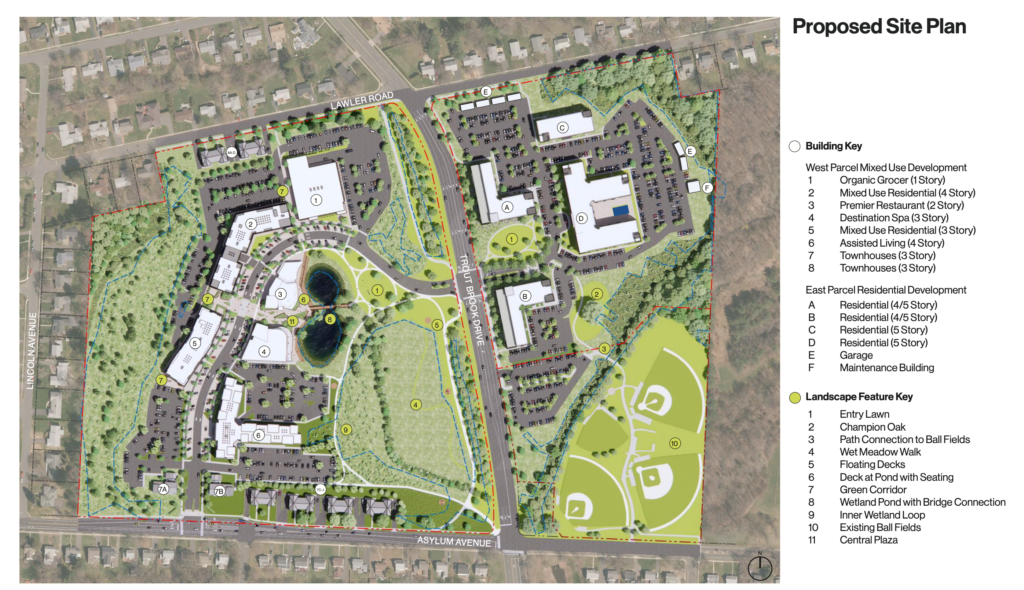
Site plan for Oakwood Park as of Nov. 16, 2023. Courtesy of West Hartford 1 LLC
The proposed Oakwood Park development includes four residential buildings of four or five stories at 1700 Asylum Avenue, with a total of 322 units.
The proposal for 1800 Asylum, the western portion of the property, includes 247 residential units, which includes 117 assisted living units, 24 townhomes, and 106 apartments in two mixed-use buildings above retail or restaurants. The plans also include a premier restaurant, a destination spa, and an organic grocery store.
Like what you see here? Click here to subscribe to We-Ha’s newsletter so you’ll always be in the know about what’s happening in West Hartford! Click the blue button below to become a supporter of We-Ha.com and our efforts to continue producing quality journalism.



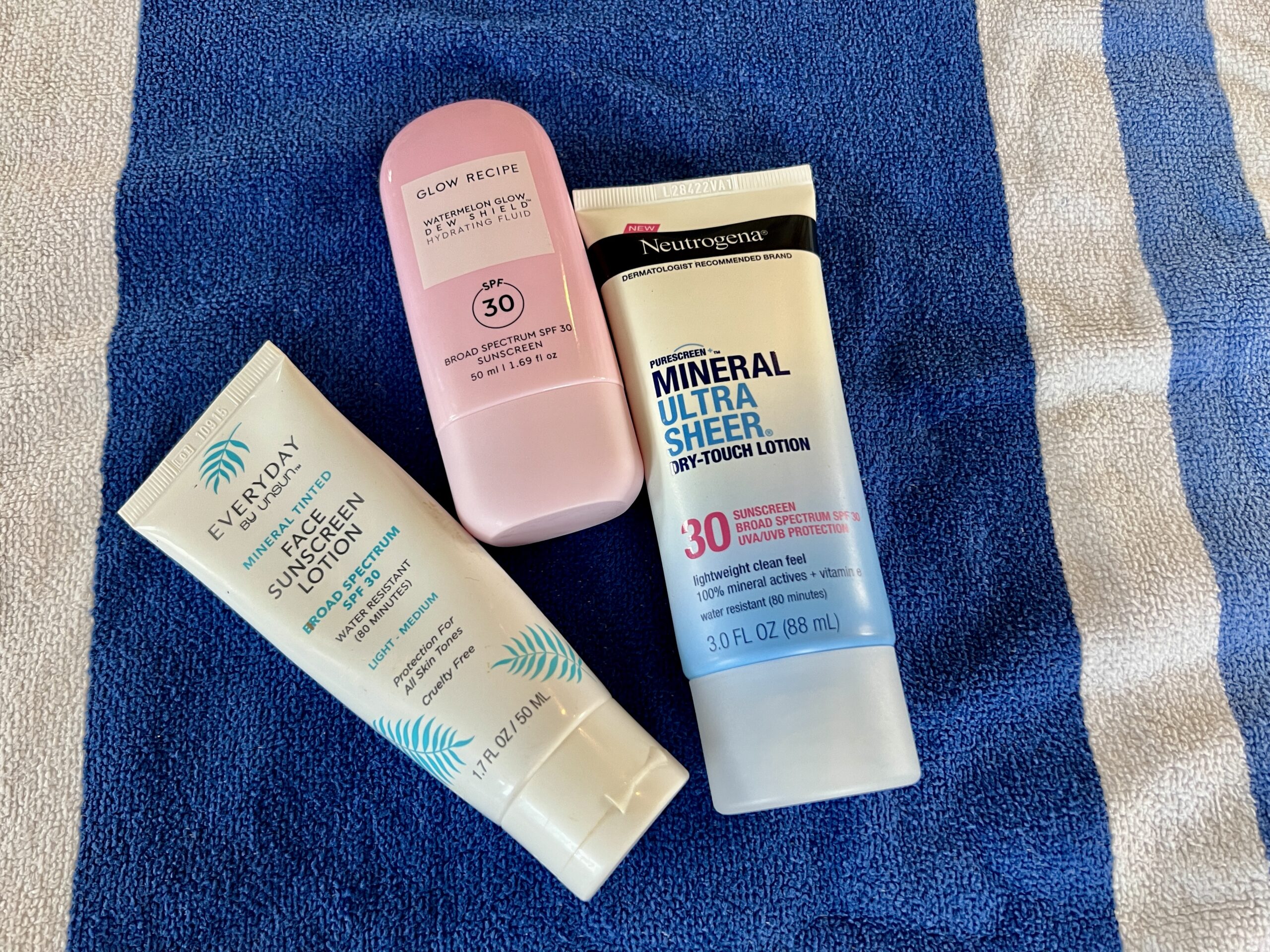
I would have attended this if I thought the town could be persuaded to moderate the scope of even a single development. This will be like all the other developments that go through without any regard for neighbors or voters.